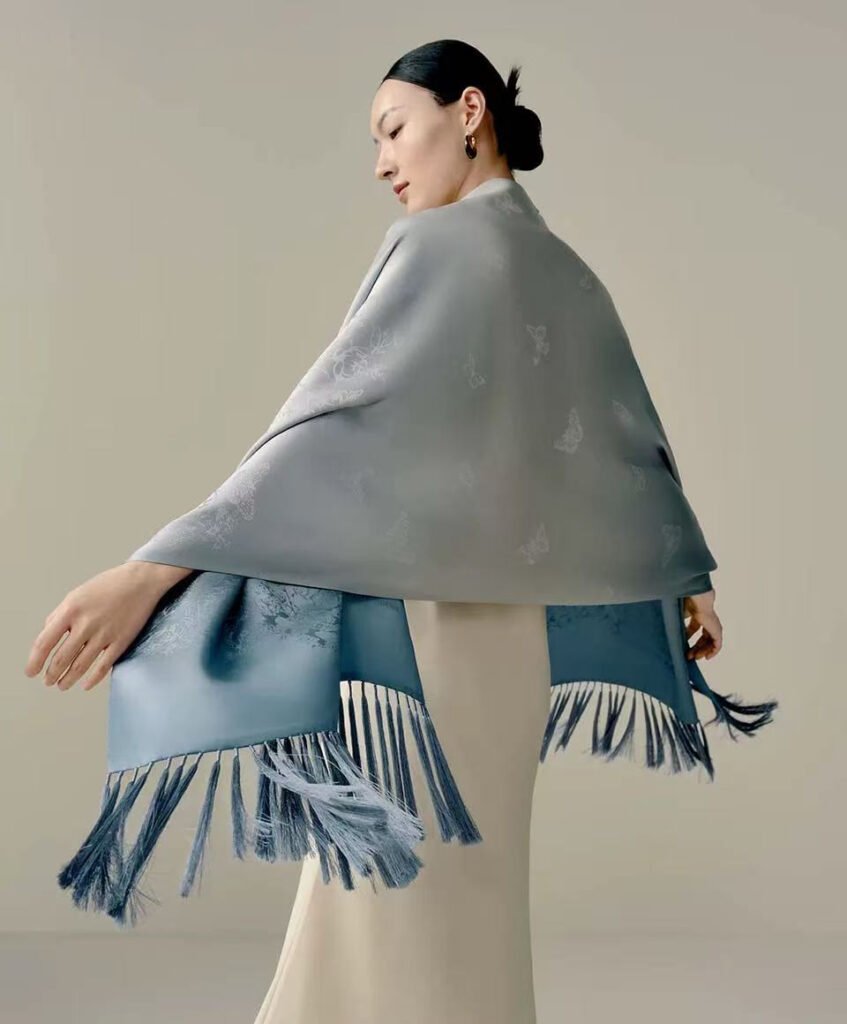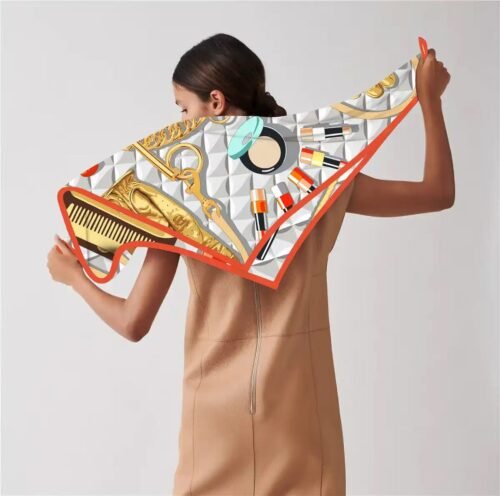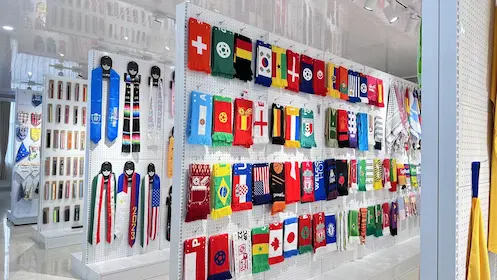Введение
A silk scarf is more than just an accessory; it’s a statement. It’s a whisper of luxury, a pop of color against a classic trench coat, a timeless piece of wearable art. Yet, when faced with a price tag that can range from a pleasant surprise to a serious investment, the question inevitably arises: Is a real silk scarf actually worth the money?
In a world of fast fashion, investing in a single, high-quality accessory can feelшелковый шарф like a big decision. This article will demystify the silk scarf, exploring its surprising versatility and benefits, breaking down exactly what you’re paying for, and guiding you on where to find one you’ll treasure for years. Let’s unravel the secrets behind this iconic piece and find out if it deserves a place in your wardrobe.

The Surprising Versatility of a Silk Scarf
Forget the notion that a silk scarf is just for tying around your neck. A single quality scarf can be one of the most versatile items you own, effortlessly adapting to your style and needs.
- The Timeless Neck Scarf: From a classic Parisian knot to a loose, elegant drape, this is the most iconic way to wear it, instantly elevating a simple t-shirt or a tailored blazer.
- A Chic Head Accessory: Channel your inner Grace Kelly by wearing it as a headscarf or headband. It’s perfect for protecting your hair from the sun and wind, or simply for adding a touch of vintage glamour.
- The Playful Bag Charm: Revitalize an old handbag by tying a colorful scarf around the handle. It’s an easy way to incorporate new trends without buying a new bag.
- An Impromptu Belt: Thread a long, skinny scarf through the belt loops of your favorite jeans or trousers for a unique, stylish alternative to a leather belt.
- A Statement Bracelet or Anklet: A smaller scarf, or “twilly,” can be wrapped around the wrist or ankle for a subtle yet sophisticated pop of color.
- Wearable Art: For truly exceptional designs, a silk scarf can be framed and hung on a wall, serving as a unique and beautiful piece of home decor.
The Unmatched Benefits of Genuine Silk
The luxurious feel of silk is just the beginning. As a natural fiber, it offers tangible benefits that synthetic materials simply can’t replicate.
- Incredibly Gentle on Skin and Hair: Silk is a protein-based fiber that is naturally hypoallergenic and resistant to dust mites and mold. Its smooth surface reduces friction, which means less irritation for sensitive skin and fewer tangles, frizz, and breakage for your hair. This is why silk pillowcases and sleep bonnets are so highly recommended.
- Natural Temperature Regulator: Silk is remarkably breathable. The fabric wicks away moisture, keeping you cool and comfortable on a warm day. In cooler weather, its low conductivity helps retain body heat, providing a surprising amount of warmth for such a lightweight material.
- Locks in Moisture: Unlike cotton, which can draw moisture away from your skin and hair, silk helps you retain it. This keeps your skin hydrated and your hair looking healthy and glossy.
- Timeless Luster and Drape: Real silk has a unique, multidimensional sheen that catches the light beautifully. Its natural drape allows it to flow and fold in the most elegant and flattering ways, a quality that machines struggle to imitate with polyester.
What Is a Silk Scarf Really Worth? The Standards of Value
So, why the vast difference in price between two scarves that both claim to be “100% silk”? The cost is a direct reflection of rarity, craftsmanship, and artistry. Here’s what determines the price:
1. The Quality of the Silk:
- Silk Type: The gold standard is Mulberry silk, produced by silkworms that feed exclusively on mulberry leaves. This results in the longest, strongest, and most uniform fibers.
- Weight (Momme): Momme (mm) is a unit of weight that indicates the density of the silk. A higher momme count (e.g., 12-19mm for a quality scarf) means a more durable, opaque, and luxurious fabric. A lightweight scarf might be 8mm, while a polyester scarf has no momme rating.
- Grade: Silk is graded on a scale (e.g., A, B, C), with 6A being the highest grade for raw silk fibers—meaning it’s the purest, finest, and most flawless.
2. The Artistry of the Print:
- Цифровая печать: This is a modern, faster method where a design is printed directly onto the fabric, much like an inkjet printer. It allows for complex, photo-realistic designs and is common for mid-range scarves.
- Hand Screen-Printing: This is the hallmark of high-end luxury scarves (think Hermès). Each color in the design requires a separate screen, and artisans meticulously apply each layer of dye by hand. A single scarf can require dozens of screens and an incredible amount of precision, resulting in richer, more deeply saturated colors that are nearly identical on both sides of the fabric.
3. The Craftsmanship of the Hem:
- Machine Hem: A standard, flat hem stitched by machine. It’s efficient and perfectly acceptable for a good quality scarf.
- Hand-Rolled Hem: The ultimate sign of a luxury scarf. A skilled artisan carefully rolls the edge of the scarf by hand and sews it with tiny, almost invisible stitches. This creates a plump, beautiful edge that helps the scarf drape perfectly. This painstaking process can take over 30 minutes for a single scarf.
4. Brand and Design: Of course, you are also paying for the brand’s reputation and the designer’s unique artistic vision. A scarf from a renowned fashion house is not just an accessory; it’s a piece of that brand’s legacy and creative expression. Limited-edition or artist-collaboration pieces can even become collector’s items and appreciate in value over time.
Where to Buy a High-Quality Silk Scarf
Finding the perfect silk scarf depends on your budget and what you value most—be it brand heritage, artisanal quality, or unique design.
- Luxury Fashion Houses (e.g., Hermès, Gucci, Ferragamo): The pinnacle of quality, craftsmanship, and design. You are buying a piece of art that is meant to last a lifetime and can even be considered an investment. Expect the highest prices.
- High-End Department Stores (e.g., Nordstrom, Selfridges, Galeries Lafayette): These stores offer a curated selection from a wide range of designer and contemporary brands, making it easy to compare different styles and price points.
- Specialty Online Boutiques (e.g., Elizabetta, ANTORINI): Many online retailers specialize in high-quality accessories, often sourcing their scarves from artisanal workshops in places like Como, Italy—a region famous for its silk production. These can offer exceptional quality, often at a better value than the big luxury names.
- Independent Designers and Marketplaces (e.g., Etsy): For something truly unique, explore platforms that feature independent artists and vintage sellers. You can find beautiful, one-of-a-kind designs and support small businesses at the same time. Just be sure to check reviews and verify the material.
Conclusion: An Investment in Timeless Style
So, is a silk scarf worth it? If you appreciate quality, longevity, and versatile style, the answer is a resounding yes.
A cheap polyester scarf might mimic the look for a season, but it will never replicate the feel, the benefits, or the graceful drape of real silk. A high-quality silk scarf is not a disposable trend item; it is a smart investment in your personal style. It’s a small touch of luxury that can transform an entire outfit, a piece of craftsmanship you can feel against your skin, and a timeless accessory that you will reach for again and again, for years to come. In an age of disposability, choosing a silk scarf is a deliberate choice for beauty, quality, and enduring elegance.



